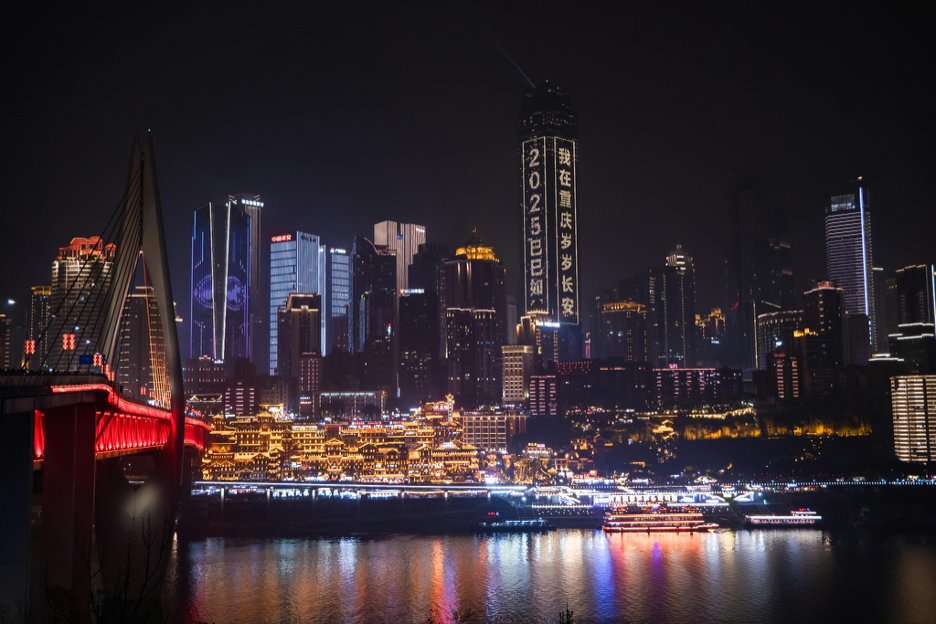Neom and Saudi Arabia’s Modernization Drive: A New Dawn for the Global Economy or a Mirage?
- Ahmed Qutub
- Oct 22
- 3 min read
Ahmed Qutub

In a blunt yet determined tone, Crown Prince Mohammed Bin Salman (MBS) announced a $500 billion “metropolis” spanning 26,500 square kilometers along the Red Sea in an effort to diversify and reshape the Kingdom of Saudi Arabia’s economy. The announcement could be captured by no word other than ambitious. Saudi Arabia’s efforts to modernize through projects, such as Neom, highlight a drastic shift in the Kingdom’s economic strategy. However, there are much broader implications for the international economy, ranging from global investment trends to energy, which will pose contentious questions on the very complex geopolitical future of the Middle East.
Saudi Arabia’s longstanding dependence on oil exports to support its economy is juxtaposed with the green energy of their new projects (such as the zero‑carbon project called ‘The Line’). They continue looking towards creating new avenues for economic growth outside of oil, which has become a major goal of several Gulf nations. The most significant success so far has been an “$8 billion project to build solar and wind farms that will be used to create so-called green hydrogen”.
The Kingdom is looking to become a modernized version of its past identity by turning into a global hub for technology and innovation through its new projects, such as “The Line”. Despite modernization efforts, decades of restrictive laws, inequality, and inhuman practices continue to haunt them. Saudi Arabia has the second-highest rate of capital punishment, often carried out with unfair and unjust trials plagued by violence, torture, and abuse.
The modernization efforts create further opportunities for foreign investors and multinationals looking to expand in sectors such as renewable energy, technology, and tourism. However, there are implications for the international economy as the Kingdom is relying on “speculative capital”. Additionally, progress is being held back by its authoritarian regime, which can negatively impact the confidence of its investors.
Futuristic projects are being criticized for their very high costs and questionable returns on investment. Additionally, the working conditions for migrant workers have continuously garnered international concern and criticism. Some label it a dystopia in which hundreds of thousands of workers are living in unsafe and unstable “clusters of modular housing compounds” erected in the remote regions of the desert. The death of foreign McKinsey consultants on treacherous roads leading to the construction site, in addition to unreported migrant worker deaths and injuries, exacerbate the already negative outlook on its projects and management. Children as young as eight have been caught driving vehicles licensed to the project’s subcontractors and have been a part of accidents leading to numerous deaths. The inadequate regulations, paired with vehicles lacking roadworthiness, have contributed to accidents and deaths.
With global economic shifts, the future of these ambitious projects is at risk as their goals are straining Saudi Arabia’s finances, particularly with global oil price fluctuations. The Public Investment Fund (PIF) of Saudi Arabia is a key driver in the journey towards its Vision 2030 goals. It is funneling capital to fund the likes of Neom and other modernization projects, which are concentrating financial risks, particularly if the projects fail to deliver on their expected economic returns. This would not only drastically impact the state of the Kingdom’s economy but also the global financial markets. The estimated contribution of the PIF in the project is approximately half of the $319 billion first-phase costs.
MBS has emphasized that overall funding will be diverse and not place a significant burden on the Kingdom’s sovereign wealth fund. However, this effort might truly be a false rebirth as Saudi Arabia has now scaled back the ambition of its $1.5 trillion desert city in the medium term, as the number of expected residents by 2030 has dropped from an optimistic 1.5 million to barely 300,000. This begs the question as to whether Neom will become yet another white elephant project in the Gulf.
Washington may benefit from keeping an eye on Saudi Arabia’s modernization drive for what it represents: a global shift in technology, development, and energy centered on a key trading partner and industry supplier. The projects have significant potential as investment opportunities, which could have large impacts on the global economy.




Comments